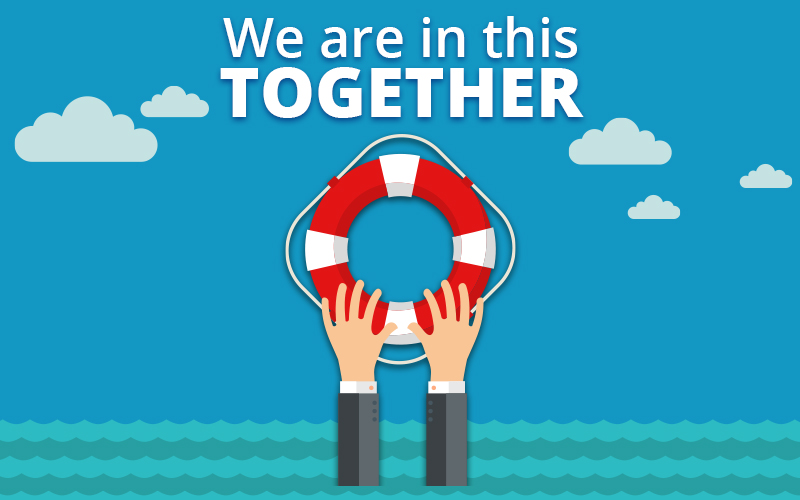Our country (and the entire world) is experiencing a crisis unlike anything most of us have seen in our lifetime. It’s hitting hard — professionally, financially, personally, physically and emotionally.
On the business front, it brings to light all sorts of questions about marketing during a crisis. Do you keep sending any email? How much do you change the message? How do you communicate that your brand has something helpful to offer without trying to take advantage of the situation?
We’ve been listening to the conversation among marketers on several social, web and email channels. We’ve also been reading customer responses.
Like you, we’ve received countless emails with company updates about COVID-19 and messages stating they are “monitoring the situation” and promising they will “keep you informed.” Some have been helpful, like those from news organizations, government agencies, schools, universities and the healthcare community. And some have been self-serving attempts to seem helpful.
The initial flurry of COVID-19 emails is slowing down, and now companies are thinking more about how this pandemic will impact their day-to-day email marketing approach.
Let’s take a moment to breathe and think through our email strategy for the foreseeable future. The Katey Charles Communications team put together some key points to consider as you adjust your messaging during this time:
Put yourself in your customers’ shoes.
Think about what your customers are going through right now as you create, review and possibly adjust your content. What are they most worried about? What do they need? Do they need it from you? (Are you sure they need it from you?)
Be authentic.
Send clear and straightforward messages. Lose the jargon.
Look for ways to help your customers.
Your customers may be adjusting to a dramatically different daily routine or may have lost a job or are concerned for their personal health and safety. Many are trying to learn how to get set up and be productive working from home. Others are trying to get their kids set up for e-learning.
Can your brand help alleviate any of those concerns?
Many news outlets are opening up gated content or lifting story limits on coronavirus articles to ensure the public stays informed.
Maybe you can fill a need for your customers, like artists who are broadcasting lunchtime art lessons for kids, museums offering online tours or fitness brands offering free streaming workouts to help people who are stuck at home. Some distilleries and perfume manufacturers have switched their production lines to hand sanitizer, which is much more necessary right now than alcoholic drinks or perfume.
If your brand has a natural pivot like this, go for it, but don’t make one up if it’s not already there.
Review ALL of your automated emails.
Is there any messaging you need to adjust in light of the current crisis? Content that is perfectly fine on a normal day could come across as insensitive or out of touch right now.
Don’t try to capitalize on the situation.
The people who stockpiled supplies and then charged a premium for them aren’t popular right now. Brands that try to take advantage of the situation won’t be popular either. It’s a delicate balance for brands that still want to engage their customers and try to drive sales. Be sure you’re not stepping over the line with messaging that takes advantage of the current situation.
Honestly, these recommendations have always applied to email marketing (and marketing in general), but they’re even more relevant in our current situation. Let’s all pause to rethink how we are communicating with customers.
Most importantly, remember that we are all in this together. One day at a time. One message at a time.
Hang in there,
– The Katey Charles Communications Team
P.S. We’re keeping a running list of good thought leadership articles on email marketing during this crisis. Take a peek at our Google doc, and if you have any you think we should add, please let us know. > Good Resources for Marketers During the Crisis

